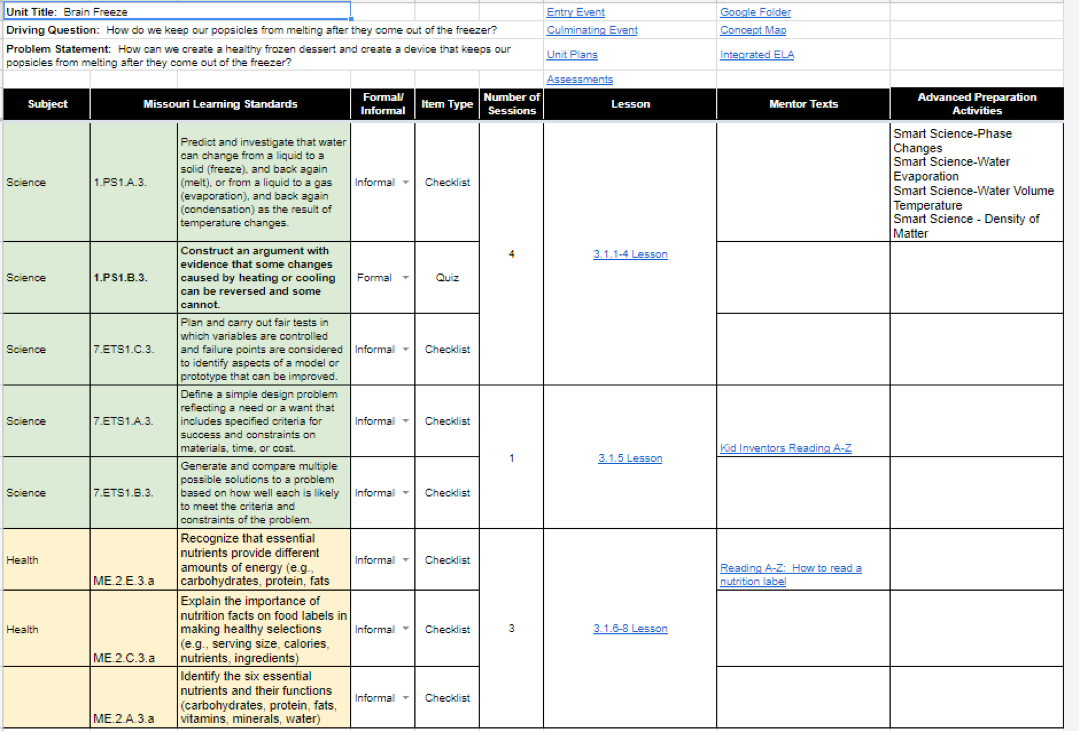Springfield Public Schools’ motto is “Engaging, Relevant, and Personal.” Our district serves 25,000 students in five high schools, nine middle schools, one intermediate school, and 36 elementary schools. About five years ago, the Learning Support Department began writing curriculum in project-based learning units to better meet this motto. The goal was to create units that were relevant to students’ lives, asking them to solve real-world problems.
Students were engaged at the beginning of the unit with a phenomenon that would generate questions and curiosity, and allowed choice throughout the unit including the culminating event, so each student could personalize their own learning. When it came time to review and rewrite elementary science, the decision was made to integrate science, social studies, and health. Our hope was that by integrating the content as well as incorporating more labs and engineering activities, teachers would be able to address each subject in depth.
The scale of this project was daunting at first. Groups of grade-level teachers that would be willing to work for a year at developing units needed to be found; a plan for training 600 teachers on implementing the units needed to be created; and supplies needed to be purchased for 28 PBL units. The first step in the process was to connect standards into clumps that would require students to apply content knowledge to relevant, real-world situations. Through the clumping process, engaging entry events and culminating events that provided personal choice and expression of students’ learning were identified. For example, a third grade unit was created called Brain Freeze. This unit connected science concepts (changes caused by heating and cooling, states of matter, and engineering) with health concepts (essential nutrients and reading food labels) through a culminating project in which students designed a healthy frozen dessert and a container to keep it from melting.
“The integration of content into PBL units has helped increase science implementation.”
The next step was to bring in grade-level groups of teachers to help write the messy middle of the PBL unit. This included the texts, videos, activities, labs, benchmarks, formative assessments, and mini lessons that would be needed to support student learning through the unit. With each layer of the concept explored, students were asked to reflect on how their learning might influence their final product or solution. As you can imagine, there is not one program or text that can support the messy middle completely. Resources have been collected from several vetted sources, including Reading A-Z and Science A-Z. The most useful resources are those that can be differentiated, are flexible in their implementation, and feature concept-focused information. Science A-Z provided outstanding leveled content text complete with labs teaching scientific investigative processes and integrating engineering practices.
The lab that we used in Brain Freeze had students investigating how long it took ice to melt in cups made from different materials. Students then were asked to engineer their own “cooler” to keep the ice from melting based on what they learned from their investigation. Reading A-Z has provided differentiated text for teachers to use during reader’s workshops and during whole group lessons. Two of the titles that were utilized in Brain Freeze were How to Read a Nutrition Label and Kid Inventors. As PBL units were implemented, teachers found that reading about the content and writing about the content could be embedded during literacy time providing an opportunity for labs and activities to happen during PBL units.
Feedback from principals and district administrators indicates that more science learning opportunities have been happening since the implementation of the PBL units. Lab materials are being used and Facebook and Twitter posts are providing evidence that students are engaged in the scientific process. Personally, I have heard more talk about the implementation of elementary science and seen more labs being completed than at any other time in the last 16 years. It appears that the integration of content into PBL units has helped increase science implementation.

Unit 3 Brain Freeze Standards
The PBL units remain living documents that will be improved with each implementation. This second year of implementation brings revisions of units and the creation of standards-based assessments. One area that our curriculum guide revision teams have been tasked to focus on is providing menus of entry events, culminating events, and messy middle activities. Feedback from teachers shows that they appreciate having choice in how they frame the PBL unit, just as students like to have a choice in how they apply their learning. The most important feedback from the students is the smiles and excitement as they share their solution or project with each other and with adults. Our Integrated PBL Unit culminating events are helping students learn to solve problems and also to learn from their mistakes.


